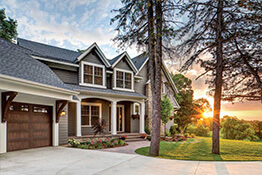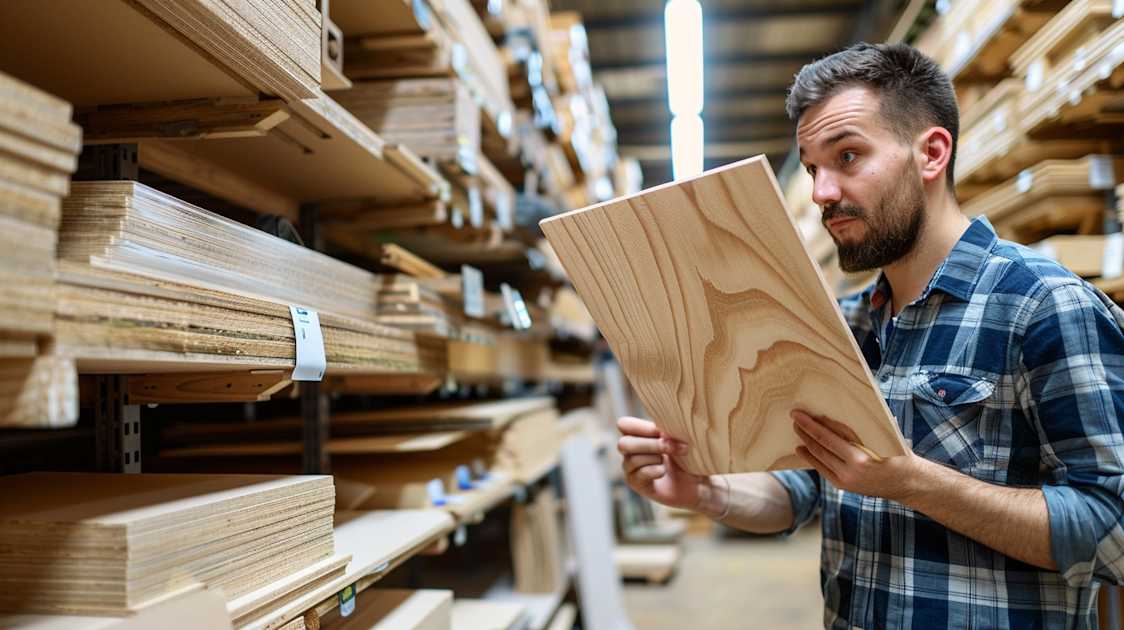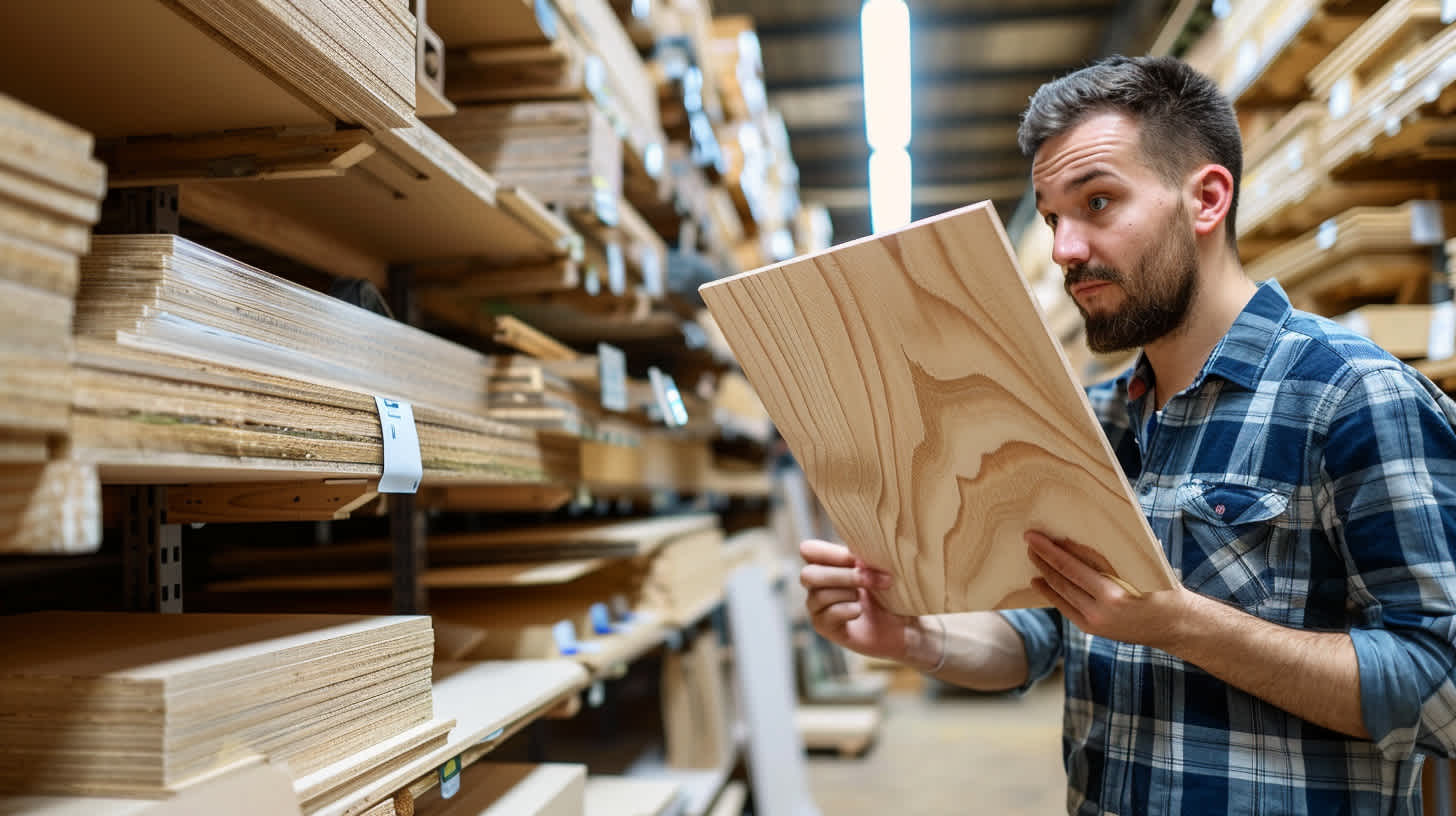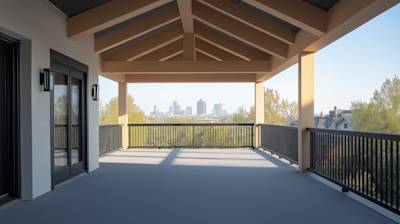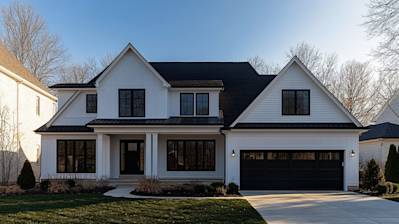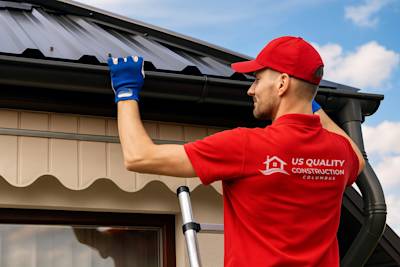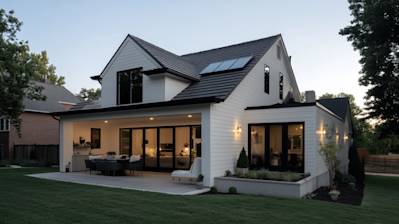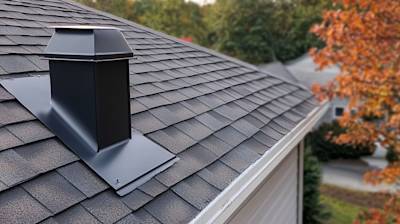Understanding the Battle: OSB vs Plywood
In the world of construction, wood panel products play an essential role. Two of these essential panel types are oriented strand board (OSB) and plywood. Builders often find themselves at a crossroads when deciding between OSB and plywood. Both have their unique characteristics, areas of use, and trade-offs. This blog aims to offer a comprehensive comparative analysis of these materials both in terms of strength, durability, environmental impact, and best use scenario. So, if you're looking to make an informed choice between OSB and Plywood, keep reading.
Definition and Construction
What is OSB?
The Oriented Strand Board (OSB) is a type of engineered wood product formed by layering strands (flakes) of wood in specific orientations. Manufactured as per specific dimensions, it is widely used in residential, commercial, and industrial construction applications. The wood strands in OSB are combined with wax and a binder, after which they are heated and pressed to form panels. These panels showcase great dimensional stability and uniformity.
What is Plywood?
Similarly, plywood is also an engineered wood product, but it is made from thin sheets of wood veneer, also known as plies. These plies are glued together with their grain running at right angles to the layer above and below, which creates a strong and durable panel. Plywood’s cross-layered structure gives it excellent strength, flexibility, insulation, sound-resistance, and more.
Cost Comparison: OSB vs Plywood
While price should not always be the determining factor when choosing a suitable board, it’s often a paramount consideration. Generally speaking, OSB tends to be cheaper than plywood. However, the price difference between the two is not excessively large and can often be negligible. The variance in property, such as thickness and grade, also influence the price.
Performance & Durability
OSB's Strength
OSB's strength mainly comes from the fact that it's engineered with water-resistant adhesives. This makes it ideal for load-bearing installations where moisture exposure could be an issue. OSB is denser than plywood and, as a result, is generally stronger.
Plywood's Flexibility & Resistance
On the other hand, the cross-layering in plywood gives it high tensile strength that resists bending and has a superior nail-holding strength. Nonetheless, both OSB and plywood are capable of offering reliable structural support in various installations.
Environmental Impact: OSB vs Plywood
Both OSB and plywood come with their own environmental considerations. Since OSB is made from small, fast-growing trees rather than large old-growth trees, it is thought to be more sustainable. Plywood, meanwhile, needs larger-diameter trees for its veneers. However, it’s worth noting that many plywood companies use sustainable forestry practices nowadays.
Best Use Scenarios for OSB and Plywood
The choice between OSB and plywood primarily comes down to the specific job at hand.
- OSB: More often than not, OSB is used for wall sheathing, roof decking, and subflooring. Its highly stable dimension makes it the perfect choice for these applications.
- Plywood: Plywood outshines OSB in areas such as cabinet and furniture making, sheathing, underlayment, and hobby woodworking, due to its excellent strength and resistance.
Making the Choice
Both OSB and plywood have different strengths and weaknesses. The decision will largely depend on your individual project needs including cost, performance, and environmental considerations. It's advisable to consider each product's suitability to your specific application rather than making a general judgement. As they say in the industry, "the right tool for the right job".
Frequently Asked Questions about OSB and Plywood
Why would one choose OSB over plywood?
People often choose OSB (Oriented Strand Board) over plywood because it's generally more affordable yet still offers similar levels of strength and durability. Additionally, OSB is also more uniform, so there's less chance of gaps or voids appearing within the board.
Why might someone prefer plywood to OSB?
Plywood is a popular choice due to its greater resistance to water and moisture compared to OSB. Plywood doesn't swell or delaminate as easily when exposed to water. It's also lighter than OSB, which can be a significant advantage in many construction projects.
What are the primary uses of OSB and plywood?
Both OSB and plywood have a wide variety of uses. These include wall sheathing, roof decking, subfloors, and more. Because of their differing characteristics, the choice between the two often depends on the specifics of the building project.
What is the environmental impact difference between OSB and plywood?
OSB can be considered more eco-friendly than plywood as it utilizes smaller, faster-growing trees. Plywood manufacturing also generates a larger amount of waste. However, it's worth noting that both materials have made significant strides in becoming more sustainable in recent years.
Can OSB and Plywood be used interchangeably?
While in many cases OSB and plywood can be used interchangeably, there are certain scenarios where one might be preferred over the other. For example, a project that requires a lighter-weight material may benefit more from the use of plywood. Similarly, a budget-conscious endeavor might opt for the cost-effective OSB.
How do OSB and plywood react to fire?
Naturally, both materials are combustible. However, plywood might char at a slower rate than OSB. While OSB tends to burn more consistently, plywood may have a lower flame spread and produce less smoke. It's essential to remember that any structure should have proper fire protection regardless of the materials used.
What's the difference in installation between OSB and plywood?
Installation of both OSB and plywood is relatively similar and will depend on the nature of the project. Both require nails or screws to fix in place. The primary difference lies in the weight; because plywood is lighter, it's often easier to handle and install.
Is OSB or plywood more suitable for an exterior sheathing?
For exterior sheathing, plywood might be a better option. This is primarily because it has a better tolerance against moisture. However, if proper moisture barriers are used, OSB can also effectively serve as an exterior sheathing.
Which has a better lifespan, OSB or Plywood?
The lifespan of both OSB and plywood can vary greatly depending on factors such as their use, conditions, maintenance, and exposure to moisture. However, both materials, if used properly and maintained well, can have a life expectancy that spans several decades.
Do OSB and plywood have different visual attributes?
Yes, they do. OSB has a rougher and more varied texture, showcasing the different wood strands. Plywood, on the other hand, has a smoother surface with a wood grain. This aesthetic difference might matter in certain applications where the material will be visible.
Pros and Cons of OSB vs Plywood
OSB (Oriented Strand Board) Pros
Affordability
- OSB is generally more affordable than plywood. This can make a noticeable difference in cost, especially for larger projects.
Uniform Construction
- The manufacturing process of OSB leads to a more uniform and consistent product. This can result in fewer voids and gaps compared to plywood.
Sustainability
- OSB can be created using smaller, younger trees and waste wood products, promoting sustainability and efficient use of resources. Plywood, on the other hand, often requires larger, mature trees.
Size Variations
- OSB panels can be produced in much larger sizes than plywood, which makes it a more versatile material for larger projects.
OSB Cons
Sensitivity to Moisture
- OSB is typically more sensitive to moisture and water damage than plywood. This can lead to expansion, swelling, and long-term damage if not properly protected.
Lower Strength
- In general, OSB is less strong than plywood. This may cause issues under heavy loads or in high-stress applications.
Plywood Pros
Strength and Durability
- Plywood tends to be stronger and more durable than OSB. This can make it a better choice for applications requiring high strength.
Resistance to Moisture
- Plywood generally handles exposure to moisture better than OSB. It resists swelling and weakening, which can extend the lifespan of the material in damp environments.
Higher Quality Appearance
- Plywood tends to have a higher-quality appearance than OSB, making it a better choice for visible elements or applications where aesthetic appeal is important.
Plywood Cons
Higher Cost
- Plywood is generally more expensive than OSB, which can increase the overall cost of a project.
Less Eco-Friendly
- The plywood production process is less efficient and sustainable than that of OSB due to the larger, mature trees it requires.
Non-Uniformity
- Plywood may contain knots and gaps, which can affect its uniformity and overall strength. In contrast, OSB’s manufacturing process generally results in a more consistent product.
Summary
If we look at the debate of OSB vs Plywood, people often prefer plywood for its longevity and smooth finish. Plywood generally offers a superb paint finish and features a higher weight-bearing capacity. It is perfect for those seeking a smooth finish and a product that can easily withstand different weather conditions. However, it's a bit more expensive in comparison to OSB.
On the other hand, for households or projects operating on a tighter budget, OSB tends to be a more popular choice when comparing OSB vs Plywood. Although it doesn't match up to plywood in terms of smoothness and weight-bearing capacity, it still offers a solid performance in most areas. Its affordability without a major sacrifice on quality makes it a common choice for many construction tasks.
Therefore, when it comes to OSB vs Plywood, the decision mainly hinges on your specific needs and budgetary constraints. If quality and finish are paramount, plywood is your best bet. If cost-efficiency is high on your list, then OSB will serve you just as well. As with any product selection, considering the requirements of the project will help dictate the ideal option.
About US Quality Construction of Columbus
Welcome to US Quality Construction of Columbus, your trusted experts for all your construction needs in Columbus, OH. In our many years of service, we have kept our commitment to delivering top-notch quality and exceptional customer service in every project we undertake. Whatever construction project you have in mind - be it residential or commercial, big or small, we blend modern techniques with traditional values to achieve results that not only meet, but exceed your expectations. Feel free to explore what we have to offer at our official website. We're excited to build your dreams into reality.
Tags: OSB vs Plywood, Construction Materials, Building Materials,
